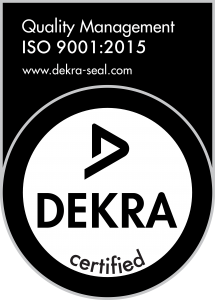860-829-2244
Pablo Fouch
@pablo21111
Profile
Registered: 1 week, 2 days ago
The Function of Interactive Data Visualization in Making Informed Choices
Extracting insights from this ocean of data requires more than just raw numbers; it requires clarity, speed, and interactment. That’s the place interactive data visualization steps in as a robust tool for turning advanced data sets into actionable knowledge.
What's Interactive Data Visualization?
Interactive data visualization goes beyond static charts and graphs. It allows customers to control and discover data through options like filters, drill-downs, hover effects, and real-time updates. These tools help customers view patterns, outliers, and trends quickly and intuitively, making it simpler to digest massive volumes of data and spot meaningful insights.
Enhancing Clarity Through Engagement
Traditional spreadsheets or static dashboards might be overwhelming and often fail to convey the total story behind the data. In contrast, interactive visuals invite users to interact directly with the data, which enhances understanding and retention. For instance, a business analyst utilizing an interactive sales dashboard can filter data by area, product, or time period to discover why sales dipped in a particular quarter. The ability to interact directly with the data fosters deeper engagement and more accurate interpretations.
Faster, Smarter Decision-Making
Speed is essential in fast-paced enterprise environments. Interactive visualizations significantly reduce the time it takes to interpret data and make informed decisions. Instead of waiting for detailed reports, executives can use dynamic dashboards to get real-time insights and adjust strategies on the fly. Whether it's recognizing buyer conduct trends, evaluating monetary performance, or monitoring key performance indicators (KPIs), interactive tools provide the agility modern businesses need.
Empowering Non-Technical Users
One of the biggest advantages of interactive data visualization is its accessibility. You don’t need to be a data scientist to use tools like Tableau, Power BI, or Google Data Studio. With intuitive interfaces and drag-and-drop functionality, these platforms empower non-technical users to explore and understand data on their own. This democratization of data puts valuable insights within the arms of more people, reducing bottlenecks and accelerating the choice-making process across departments.
Real-World Applications
Interactive data visualization has found applications across industries:
Healthcare: Hospitals use interactive dashboards to monitor patient outcomes, predict illness outbreaks, and optimize resource allocation.
Retail: Retailers analyze customer shopping for behavior, inventory trends, and regional sales to optimize stock and improve marketing strategies.
Finance: Monetary institutions rely on real-time dashboards to monitor markets, assess risk, and stay compliant with regulatory changes.
Education: Schools and universities track student performance, attendance, and interactment through visual dashboards to improve learning outcomes.
In each case, interactive visualization not only presents data clearly but also reveals correlations and patterns that may in any other case go unnoticed.
Encouraging Collaboration and Communication
Data visualization isn't just about individual understanding—it also plays an important function in collaboration. Teams can use shared dashboards throughout meetings to align strategies, communicate findings, and help arguments with clear visual evidence. This visual communication bridges gaps between departments and ensures that everybody is on the same page, regardless of their technical expertise.
Driving Strategic Advantage
Companies that invest in interactive data visualization often acquire a competitive edge. By transforming data into a strategic asset, companies can make proactive selections, anticipate challenges, and identify opportunities faster than competitors. The ability to respond to market modifications in real time can mean the difference between leading and lagging in as we speak’s competitive landscape.
Final Words
Interactive data visualization is not any longer a luxury—it’s a necessity in the modern decision-making toolkit. It bridges the hole between raw data and actionable insight, empowers users in any respect levels, and enhances both the speed and accuracy of decisions. As data continues to develop in volume and complicatedity, businesses that embrace interactive visualization will be better outfitted to navigate the long run with confidence.
If you have any kind of concerns concerning where and how to make use of Business Intelligence Dashboards, you can contact us at our web site.
Website: https://datamam.com/real-time-dashboards-development/
Forums
Topics Started: 0
Replies Created: 0
Forum Role: Participant

